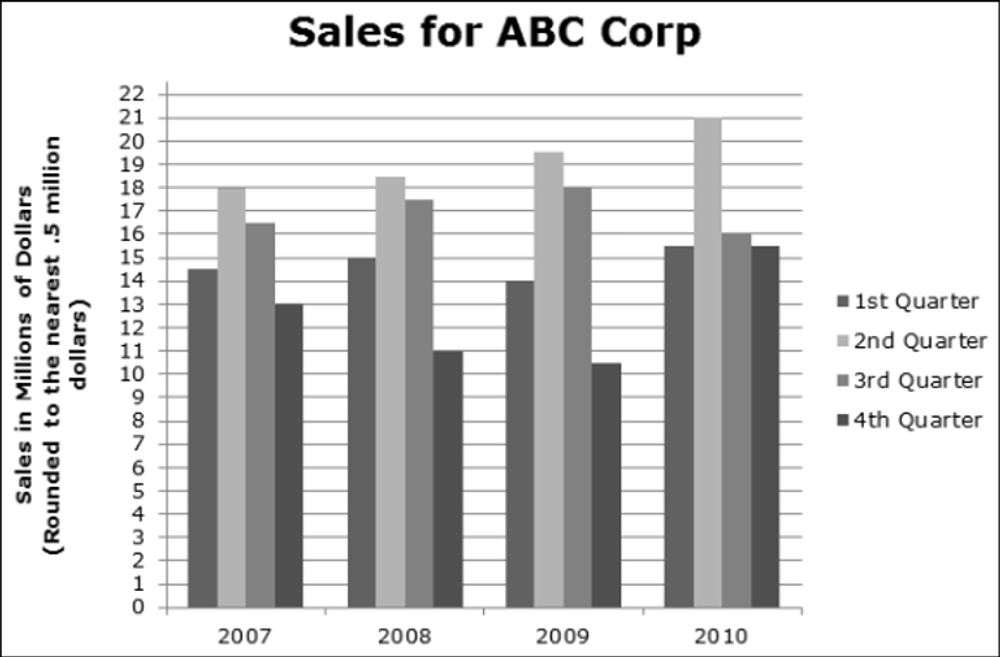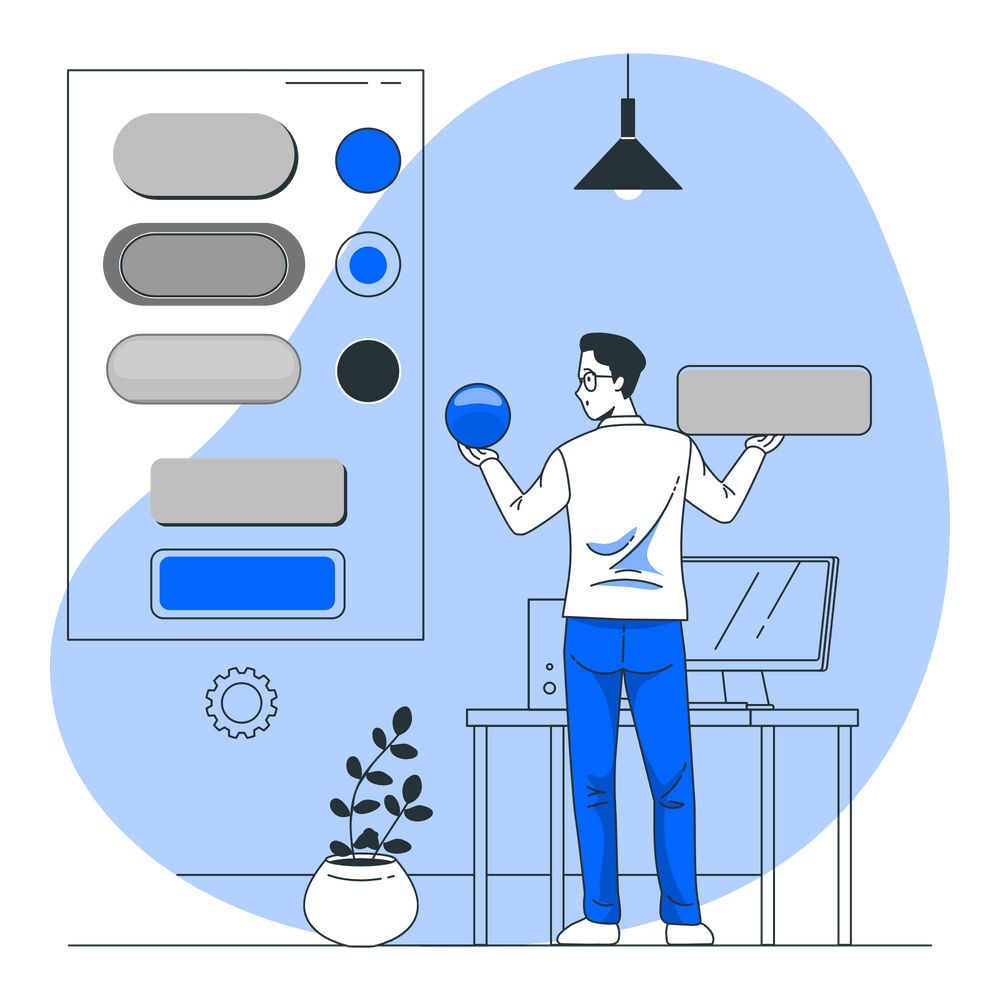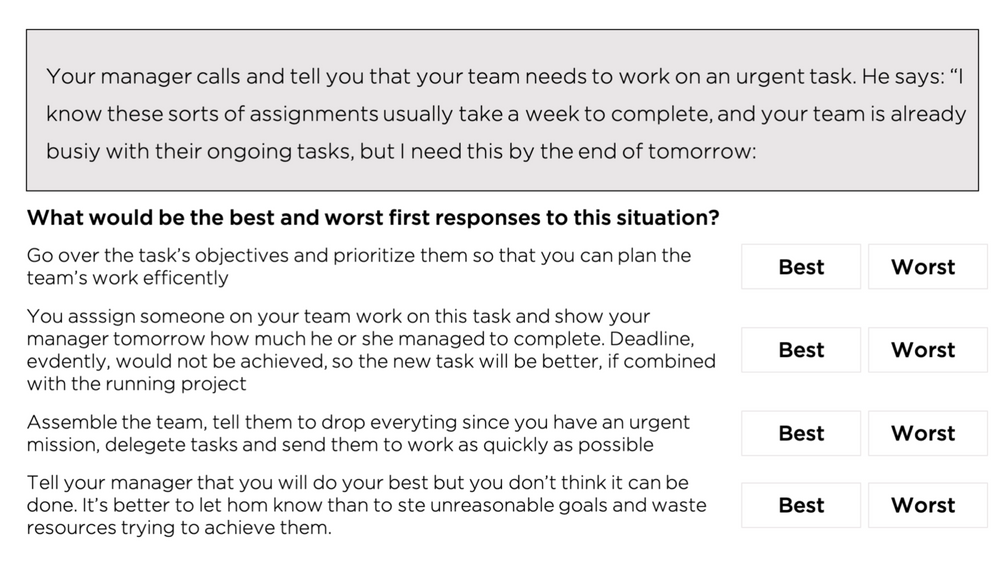It’s not a surprise that getting hired by Amazon is a dream that many job seekers share – the good pay, the generous benefits, the top-notch technology, the career development paths it offers, you name it. To land a job offer, however, you first must ace the initial Amazon Online Assessment.
Amazon’s Assessments are often tricky. Their structure is unique, and what they test for “behind the scenes” is not found in other companies’ hiring processes. This article will give you an overview of the main types of Amazon Online Assessments, with sample questions and answers, as well as useful tips to instantly perform better. Let’s dive in!
Table of Contents
What are Amazon Online Assessments?
Amazon Online Assessments (OAs) are collections of pre-interview screening tests given to applicants who have successfully passed the first two rounds of the Amazon recruitment process. Online assessments are highly dependent on job positions. For instance, Maintenance Technicians must take the Amazon Maintenance Technician Test, Software Engineers must take coding tests, and Operations Managers must take the Amazon Area Manager Assessment. There are, however, online assessments commonly required by many job positions, such as the aptitude tests or personality tests (Amazon Workstyle Assessment).
When do Amazon Online Assessments take place?
Amazon Online Assessments are usually given on the third round of the Amazon recruitment process, just after resume screening and phone screening rounds. However, tests designed for specific job positions can appear at different stages of the recruitment process.
If you’re not familiar with Amazon’s hiring process, I suggest checking out this article before reading on. That said, the typical recruitment process consists of six steps:
Step 1: Pass the resume screening
Step 2: Pass the screening call
Step 3: Pass the Amazon Online Assessments
Step 4: Pass the video interviews
Step 5: Pass the writing test
Step 6: Pass the “Loop” (on-site) interviews
Step 7: Pass the hiring committee reviews and get the offer
Two categories of Amazon Online Assessments
Amazon Online Assessments can be broadly categorized into two categories: (1) online aptitude assessments and (2) position-based online assessments. Online aptitude assessments are used to evaluate the candidate’s analytical skills, while position-based online assessments evaluate specific skill sets relevant to the role that the candidate is applying for.
Assessments in the first category might be required by many job positions. For example, almost every position requires taking an Amazon numerical assessment test. In the second category, some assessment examples are the Maintenance Technician test, Area Manager assessment, assessment test for Warehouse, SDE online assessment, Financial Analyst Excel test, and AWS assessments (for Solution Architect and Cloud Support candidates).
The remaining of this article will give you an overview of each test type for each category, with example questions. I’ve also included useful tips to prepare for the common Amazon Online Aptitude Tests.
Amazon Online Aptitude Assessments
There are four main types of Amazon online Aptitude Tests:
- Numerical reasoning test
- Verbal reasoning test
- Logical reasoning test
- Amazon workstyle assessment
Below, I will explain what each test is about, what sort of questions you will encounter, and how to prepare for online aptitude assessments. Let’s dive in!
Amazon online numerical reasoning test (17 to 25 minutes)
Numerical reasoning tests are the most widely used tests by Amazon, delivered by either SHL or Kenexa. Almost every position requires taking an Amazon Numerical Reasoning test. Below, I outlined what’s included in the test, what it measures and some example questions (with answers).
What’s included in a numerical reasoning test?
A Numerical Reasoning test usually comprises 6 data sets, each followed by three multiple-choice questions. These amount to 18 questions in total, for which candidates have 17-25 minutes to answer. The questions typically require candidates to interpret data from graphs, charts, and tables to select the correct answer. This will require a good grasp of basic mathematics. Topics often covered in Amazon numerical reasoning tests are:
- Probability
- Permutations & Combinations
- Algebra
- Averages
- Time Speed & Distance
- Time & Work
- Profit & Loss
- Ratios & Fractions
- Simple & Compound Interest
- Percentages
- Number Series
- Mixtures & Alligations
- Simplification
- Number System
- Heights and Distances
- Geometry & Mensuration
- Data Sufficiency
- Logarithms
- Progressions
What do numerical reasoning tests measure?
The questions are designed to assess a candidate’s analytical skills, in particular, how well she can reason through numerical information to make correct decisions. On the test, the candidate must analyze, understand, and interpret numerical data, typically presented in charts, graphs and tables, to determine the correct answer to a multiple-choice question.
Although a basic understanding of maths is required as a prerequisite for Graduate and Professional tests, it is actually the reasoning and application of the data given that is being assessed. This is contrary to the popular belief that Numerical Reasoning tests measure math skills, which is what one can expect if they were asked to complete a ‘Calculation’ assessment.
What do numerical reasoning tests look like?
Here are some sample numerical questions from Amazon Numerical Reasoning Tests:
EXERCISE – NUMERICAL REASONING

If salespeople earn 10% of their sales in pay and typical business costs account for 20% of the value of each sale, how much more profit was earned in 2010 than in 2007?
A. $4.0 million
B. $4.2 million
C. $5.0 million
D. $6.0 million
E. $6.4 million
Answer
Option B
Sales in 2007: 14.5+18+16.5+13 = $62 million, cost = 20%+10% =30%.
Profit in 2007: 62*(100%-30%) = $43.4 million
Sales in 2010: 15.5+21+16+15.5 = $68 million, cost = 20%+10% =30%.
Profit in 2010: 68*(100%-30%) = 47.6 million dollars.
(Profit in 2010 – Profit in 2007) = 47.6-43.4= $4.2 million.
So, the correct answer is B.
Amazon online verbal reasoning test (19 minutes)
Verbal reasoning tests are the second most often used type of aptitude test at Amazon, delivered by either SHL or Kenexa. Take a look at what’s included in the test, what it measures and an example question (with answer) below.
What’s included in a verbal reasoning test?
A Verbal Reasoning test typically comprises 30 multiple-choice questions, with 19 minutes of answering time in total. For each question, the candidate is given a passage of text, followed by the question, presented in the form of a statement. Based on the information contained in the passage, she must decide whether the statement given is “true”, “false”, or “cannot say”.
What do verbal reasoning tests measure?
Verbal Reasoning tests measure a candidate’s capacity in reasoning through written information to determine its meaning or any implication. The reasoning process centers on interpreting and filtering out information, in which the candidate must analyze, understand, and critically evaluate concepts presented in the passage.
What do verbal reasoning tests look like?
Here’s an example of an Amazon-style Verbal Reasoning test:
EXERCISE – VERBAL REASONING
More needs to be done to capitalize on the power of peer-to-peer networks that many music downloaders still use. A recent study found that the regular downloaders of unlicensed music spent an average of £5.52 a month on legal digital music. This compares to just £1.27 spent by other music fans. The research clearly shows that music fans who break piracy laws are highly valuable customers. It also suggests that they are eager to adopt legitimate music services in the future. One researcher pointed out that “There’s a myth that all illegal downloaders are mercenaries hell-bent on breaking the law in pursuit of free music”. In reality, hardcore fans are “extremely enthusiastic” about paid-for services, as long as suitably compelling, he says.
People who downloaded unlicensed music tend to not buy digital music.
1. True
2. False
3. Cannot say
Answer
Option B
The passage states that “A recent study found that the regular downloaders of unlicensed music spent an average of £5.52 a month on legal digital music.”
Therefore, the statement is false as downloaders of unlicensed music still buy legal digital music.
Amazon online logical reasoning test (25 minutes)
Logical reasoning tests, also known as inductive reasoning or diagrammatic reasoning, are another common type of aptitude test at Amazon. They are typically used for roles such as IS and IT where data analysis and logic is highly used. Investment banks also use these tests for their analysts and traders.
What’s included in a logical reasoning test?
A logical reasoning test typically comprises 24 multiple-choice questions, with 25 minutes of answering time in total. For each question, the test taker is usually given sequences of 4 out of 5 images, and is required to select the missing image by identifying the underlying patterns and trends. The questions often gradually increase in difficulty as the candidate progresses.
What do logical reasoning tests measure?
Logical Reasoning tests a candidate’s ability to draw inferences and understand the relationships between various concepts independent of acquired knowledge. The specific skills tested are: pattern identification and sequence abilities, logical thinking skills, and capacity to approach and solve a given problem.
What do logical reasoning tests look like?
Logical Reasoning questions often come in three main forms:
- Diagrammatic reasoning tests present questions in the form of diagrams where a number of rules apply. You will be asked to identify the underlying patterns and rules within the sequence of diagrams presented and use these to determine the missing image.
- Spatial reasoning tests evaluate your ability to manipulate 2D and 3D objects, spot patterns between shapes, and visualise movement and change in those shapes.
- Abstract reasoning tests examine lateral thinking and the ability to quickly identify patterns, relationships and logical rules between objects which may at first appear unconnected.
Amazon Workstyle Assessment (15 minutes)
The Amazon Workstyle Assessment isn’t a single exam, but rather a complementary that comes directly before or after the Amazon Online Assessments required for the position you’re applying to. Amazon Workstyle assessment is the most common personality test at Amazon, given to almost all applicants.
What is the Amazon Workstyle Assessment?
The Amazon Work Style assessment is a 15-minute personality test that evaluates a candidate’s work preferences and qualities to determine her suitability to Amazon’s unique culture. On the test, candidates will be given pairs of statements and must decide which statement best describes themselves. Overall, there will be a few dozen such pairs. Here’s an example for a question:
(A) I adjust my normal approach when a situation requires it.
(B) I approach changes more cautiously than others.
Now, you must choose which statement best describes yourself.
How can I prepare for the Amazon Workstyle Assessment?
Amazon’s Work Style Assessment is completely based on the Amazon Leadership Principles. These are core values that are super important to Amazon, and its worker’s address and follow them daily.
Hence, before starting the Work Style Assessment, read the Leadership Principles and learn how to implement them in your past work experiences.
Additionally, it’s also important to familiarize yourself with common personality test questions, their structure, and what personality traits they evaluate.

Three useful tips to prepare for aptitude assessments
Tip 1: Brush up mental math and numerical reasoning
Numerical reasoning tests measure how you ‘reason’ with the data provided. Application of basic mathematics is a key factor to succeed. Take the time to practice these areas before taking the test to help boost your chances of performing confidently on the test:
- Basic arithmetic
- Percentages
- Ratios
- Fractions
- Estimates
- Data manipulation especially related to time, currency and measurement
Additionally, as you must answer every question within 1 minute, quick mental math will save you lots of time and brain power. I’ve written a separate article on how you can improve your mental math here. Alternatively, watch this comprehensive video containing killer tips to improve your mental math skills.
Tip 2: Practice fast reading and verbal reasoning
There is a lot of data to process, but only 30-90 seconds for each question, so you must read fast. Really fast. Luckily, I also know 2 techniques to help you with that. I wrote about them in this article, but here is a quick summary.
- The first one, called “Trackers and Pacers” speed up and smooth out your eye movements. The natural, snappy eye movement is a major bottleneck, preventing your brain from fully using its comprehension ability. That’s why you see many experienced readers using pens/pencils to “guide” their eyes in the reading process.
- The second one, called “Perceptual Expansion”, makes full use of your peripheral vision (your eyes’ ability to see to the sides), so instead of reading from the first to the last words of each line, your eyes only need to go through the center ones.

The whole thing is from an experiment called “The PX Project” – and the best thing is that you need only a few hours to start seeing the benefits.
Tip 3: Get properly organized for the actual test
- Find a quiet space. No interruptions, noises, music in the background. Focus is key since you will have a limited amount of time to complete the test. Make the most out of the available time.
- Check that you have the right materials. Numerical tests involve using a calculator. Be sure to pick one that you’re comfortable using.
- Check that you have a strong WiFi connection. Many tests can log you out and restrict you from accessing the assessment again.
- Remember to work through the questions quickly and accurately. Read each question carefully and work through them with a level of speed to manage your time.
Amazon Position-based Online Assessments
I call this category of Amazon Online Assessments “position-based” online assessments because they evaluate specific skill sets relevant to the role that the candidate is applying for. So far, I’ve collected seven types of position-based assessments, they are:
- Amazon Maintenance Technician Test: The toughest part of the Amazon Maintenance Technician’s hiring process.
- Amazon Area Manager Assessment (Manager In Operations): The first screening step that any Area Manager and Operations manager candidates must pass.
- Amazon Financial Analyst Excel Test: Advanced Excel assessment and case study preparation for financial analysts.
- Amazon Assessment Test for Warehouse: A behavioral and personality assessment that is a crucial part of the Amazon warehouse & fulfillment assessments.
- Amazon SDE Online Assessments: A set of assessments given to candidates applying for Software Development Engineer positions.
- Amazon MBA Online Assessment – The initial online assessment that any Amazon MBA candidate has to pass.
- Amazon Solutions Architect Assessment: The online assessment given to Solutions Architect and Cloud Support candidates.
Below you can find an overview and example questions for each position-based assessment type.
Amazon Software Development Engineer (SDE) Online Assessments
Amazon SDE Online Assessments usually comprise three tests. These three tests are slightly different in difficulty, depending on whether you’re a new grad applying for SDE Intern positions, or an experienced hire applying for senior SDE roles. Here’s an overview of each test:
- Code Debugging (7 questions, 20 minutes):
You’re given a problem and a snippet of code intended to solve the problem but isn’t, because of a bug. Each question is allotted 3 minutes and you’re asked to fix the code before the time expires. Coding languages available for this online assessment are: Java, C, and C++. This online assessment is only used for internship and new graduate positions.
- Coding Test (2 questions, 70 minutes):
You’ll be given two data structure and algorithm questions, each must be solved in 30 minutes. You can compile your code as many times as you like before submitting a solution.
Up to 8 languages can be used: C#, C++, Java, C, Python, Ruby, Swift, and JavaScript. Senior positions sometimes have to take this test. Some senior positions require this test. The more experienced you are the harder the questions get.
- Work simulation (~2h) and logical reasoning (24 questions, 35 minutes):
There are two parts to the third online assessment:
In Part 1, you’ll be given a day-in-the-life interactive simulation of a software development engineer (SDE) at Amazon. You’ll encounter various scenarios and must select options for how you would respond. This part takes about 2h to complete.
In Part 2, you’ll be given 24 logical reasoning multiple choice questions to work through in 35 minutes. These questions assess your problem-solving skills. Speed of completion for each question is not a factor in your score. Complete as many as you can during the time allotted.
Amazon Maintenance Technician Test
The Amazon maintenance tech test is a proctored mechanical and electrical assessment given to candidates for various maintenance jobs. The assessment was developed by Ramsay and is based on their current tests. The topics you’ll be tested on include the following:
- Print Reading
- Power Transmission & Preventative Maintenance
- Tools, Material and Equipment
- Pneumatics and Hydraulics
- Electrical Theory and Control Circuits
- Test Instruments
Here’s an example of a question type you’ll likely see on the real Amazon maintenance test:
1. Position A
2. Position B
3. Position C
4. Either B or C
Amazon Area Manager Assessment
The Amazon Area Manager assessment, also known as the Manager In Operations Virtual Job Tryout, is a test given to any Operations Manager (Area Manager) candidates. The test contains a mix of aptitude, personality, and behavioural questions. It takes about 45 minutes to complete and includes five sections:
- Work Scenarios – a Situational Judgment Test (choose what you’d be Most or Least likely to do)
- Manage Your Day – prioritize tasks and activities based on their urgency
- Run Your Area – answer questions using information provided in data reports
- Tell Us Your Story – describe your background and work experience
- Describe Your Approach – a personality test in which you’ll need to decide which statement is most like you
Here’s an example for a question type that you’ll likely see on one of the test’s sections:

Amazon Solutions Architect Assessment
After you pass the initial resume screening for a range of Solution Architect roles at AWS, you’ll be given the Amazon Solutions Architect (SA) online assessment. This assessment takes about 75-90 minutes to complete and is divided into five different sections:
- Hiring Simulation with several real-life scenarios
- Amazon Work Style Assessment
- General Technical Knowledge section to assess technical skill
- Proficiency Interest Survey
- Technical Indicator Assessment
What’s included in the Solutions Architect (SA) Online Assessment?
First, you’ll be given a “proficiency interest” survey, in which you’ll self-rate your proficiency in four areas of technology. After that, you’ll work through technical modules designed to assess your knowledge against the rated proficiency you provided in the survey.
The general technical assessment focuses on system design, compute, cloud migration, and cloud design. Assessment questions are a mix of multiple choice and objective/situational questions. Note that there are no coding questions.
Amazon Assessment Test for warehouse
Candidates for Amazon’s Warehouse and fulfillment associate positions take an online assessment called Amazon Associate Game On Virtual Job Tryout. This assessment consists of two sections: “Tell Us Your Story” and “Slow Pro”.
(1) Tell Us Your Story: On this part, you’ll get 22 multiple-choice questions asking about your work experience, background, and approach. Here are a few examples of questions:
- How would your most recent employer rate your attendance compared to others?
- In your most recent job, how many times per year did you have an unexcused absence?
- How would your most recent supervisor at work rate your drive to become a top performer compared to others?
You’ll see additional statements in which you’ll need to choose an answer from “Strongly disagree” to “strongly agree.”
(2) Stow Pro: This section includes three games that showcase your work scope as a Warehouse associate. All three games have rules similar to those used in existing facilities. During the games, you’ll need to place virtual items onto shelves, load packages into aisles, and place grocery items into shopping bags.
Amazon Financial Analyst Excel Test
What is the Amazon Excel Assessment Test?
All Financial Analysts at Amazon are required to successfully pass an Excel Test. These Excel Assessments may be sent to you after you pass the initial resume screening and may also appear during the interview stage.
What’s included in the Amazon Excel Assessment Test?
The Amazon Excel Assessment test requires you to master the different features of the software. Most of the questions on this excel assessment will deal with formulas, macro creation, advanced formatting, and document properties.
/filters:quality(75)//case_thumb/public/1699589977462_aptitude_tests_package_4_x.png)